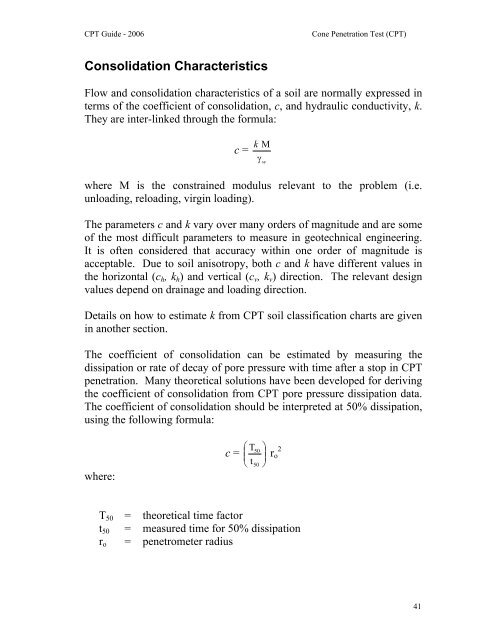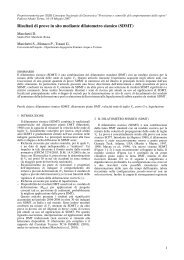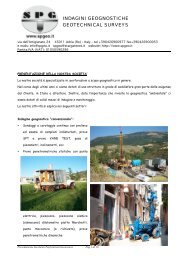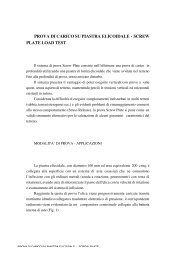GUIDE TO CONE PENETRATION TESTING - SPGEO
GUIDE TO CONE PENETRATION TESTING - SPGEO
GUIDE TO CONE PENETRATION TESTING - SPGEO
You also want an ePaper? Increase the reach of your titles
YUMPU automatically turns print PDFs into web optimized ePapers that Google loves.
CPT Guide - 2006Cone Penetration Test (CPT)Consolidation CharacteristicsFlow and consolidation characteristics of a soil are normally expressed interms of the coefficient of consolidation, c, and hydraulic conductivity, k.They are inter-linked through the formula:c =k Mγwwhere M is the constrained modulus relevant to the problem (i.e.unloading, reloading, virgin loading).The parameters c and k vary over many orders of magnitude and are someof the most difficult parameters to measure in geotechnical engineering.It is often considered that accuracy within one order of magnitude isacceptable. Due to soil anisotropy, both c and k have different values inthe horizontal (c h , k h ) and vertical (c v , k v ) direction. The relevant designvalues depend on drainage and loading direction.Details on how to estimate k from CPT soil classification charts are givenin another section.The coefficient of consolidation can be estimated by measuring thedissipation or rate of decay of pore pressure with time after a stop in CPTpenetration. Many theoretical solutions have been developed for derivingthe coefficient of consolidation from CPT pore pressure dissipation data.The coefficient of consolidation should be interpreted at 50% dissipation,using the following formula:where:c =⎛ T⎜⎝ t5050⎟ ⎞⎠r o2T 50 = theoretical time factort 50 = measured time for 50% dissipationr o = penetrometer radius41






